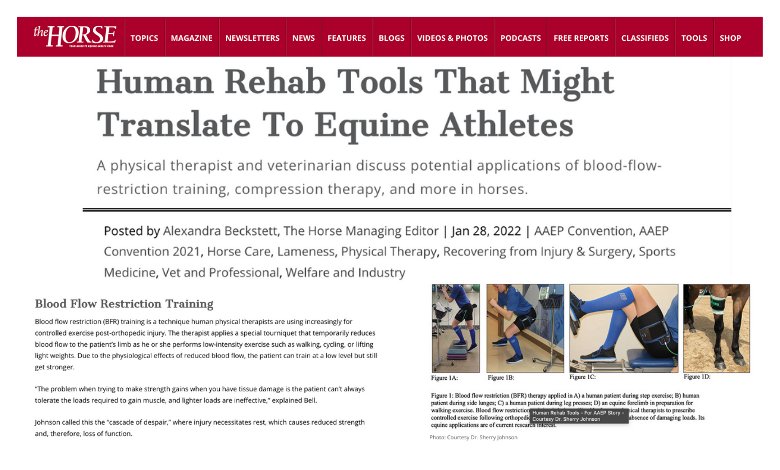"Equine rehabilitation is a dynamic field that’s advancing constantly. Owners, trainers, and veterinarians are often willing to experiment with new technologies and modalities to keep their valuable elite equine athletes performing at their best.
During the 2021 American Association of Equine Practitioners (AAEP) Convention, held Dec. 4-8 in Nashville, Tennessee, sports medicine specialists compared notes on rehabilitation techniques for humans and horses.
“The objective of this outline is to discuss emerging rehabilitative approaches used in elite human athletes, provide an overview of the research supporting their translational use, and discuss how their incorporation may apply to the equine athlete,” said Sherry A. Johnson, DVM, MS, Dipl. ACVSMR, a PhD candidate at Colorado State University and partner at Equine Sports Medicine LLC, in Fort Collins.
Johnson was joined by Stephania Bell, PT, OCS Emeritus, CSCS, a physical therapist and senior writer and injury analyst for ESPN. Here are some of the strategies they discussed.
Blood Flow Restriction Training
Blood flow restriction (BFR) training is a technique human physical therapists are using increasingly for controlled exercise post-orthopedic injury. The therapist applies a special tourniquet that temporarily reduces blood flow to the patient’s limb as he or she performs low-intensity exercise such as walking, cycling, or lifting light weights. Due to the physiological effects of reduced blood flow, the patient can train at a low level but still get stronger.
“The problem when trying to make strength gains when you have tissue damage is the patient can’t always tolerate the loads required to gain muscle, and lighter loads are ineffective,” explained Bell.
Johnson called this the “cascade of despair,” where injury necessitates rest, which causes reduced strength and, therefore, loss of function.
With blood flow restriction training, however, the occlusion of the blood vessels traps lactate in the muscle, triggering natural growth hormone release, Bell said. One human study showed a 280% increase in growth hormone release post-BFR. It also causes endorphin release, she said, which can provide patients with enough pain relief to perform the therapy.
The question, then, is whether we can use BFR as a rehab tool for horses on stall rest or reduced exercise. Johnson said the unknowns include appropriate pressures for horses, tourniquet cuff size, and access to affected muscle groups."
View the full article here.


